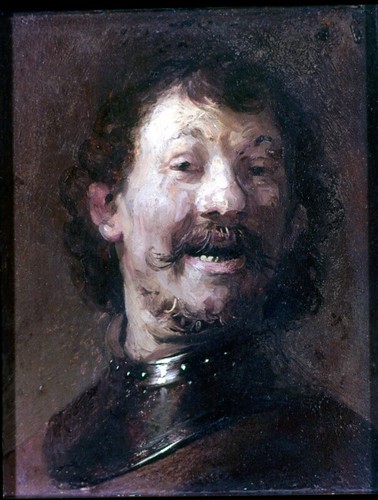
Rembrandt Laughing Self Portrait Mauritshuis The Hague
I had not realized, until my (now nearly daily) reading of Lines and Color that Friday was the 400 anniversary of the birth of Rembrandt van Rijn.
Serendipitously, I had found a series of art books that I had packed away years ago, including one on Rembrandt. These books were part of a series by McGraw-Hill published in 1970 which included slides of various artwork by each artist. My mom had found them about fifteen years ago and had given them to me. Even by then the slides had degraded into the red range (cheap film) and the book illustrations were all in black and white. Having better references I packed these away. However, I now have an excellent pro-grade scanner which does slides, as well as Photoshop on my Mac. I am in the midst of scanning in the slides from the books. There were twelve from the Rembrandt book, and I’ll post some that I don't remember having seen reproduced elsewhere. Photoshop allows for some color correction, but considering the condition of the slides and the possible original state of the paintings (I can’t remember when it was that “Night Watch” was cleaned, showing its true colors that had been browned out for decades by old varnish, others obviously may have been darkened by varnish) I can’t claim the best color for these.
To quote from the book, written by Diane Kelder, then at the Department of Art History of Finch College: ”Rembrandt was born in the small university town of Leyden on July 14, 1606, the fifth of six children. His father, Harmen Gerritsz van Rijn, whose family came from the region near the Rhine river, was a fairly well-to-do miller; his mother, Cornelia, the daughter of a baker. Politically, the years of Rembrandt’s childhood were unusually calm and peaceful. Early in the seventeenth century, Holland, or the United Provinces, had emerged as an independent colonial power and had entered a period of great commercial prosperity. The country’s considerable seapower helped to create a sphere of economic interest that extended from continental Europe to the South Pacific. Within a short time, this overseas expansion had generated an atmosphere of affluence, vitality, and optimism which proved most beneficial to the fine arts.”
It was into this vitality that one of the greatest painters to ever live was born. Enjoy the images.
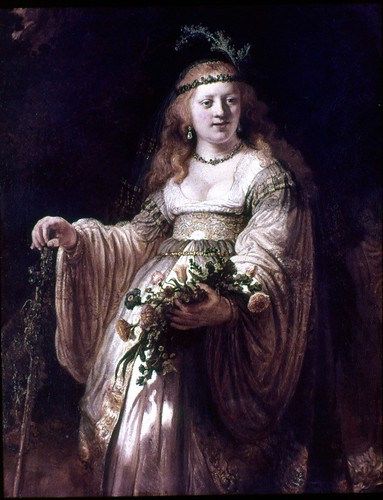
Saskia as Flora National Gallery London
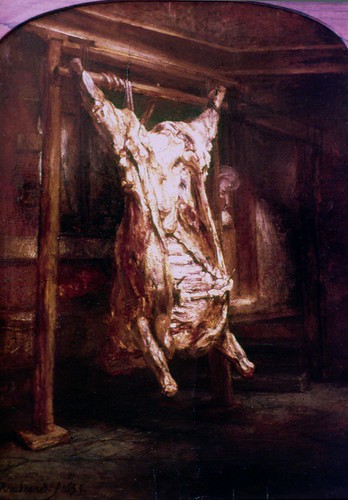
Slaughtered Ox Louvre Paris
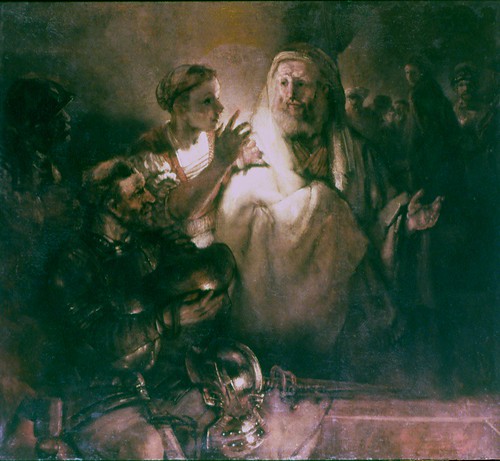
Denial of Peter Rijksmuseum Amstedam
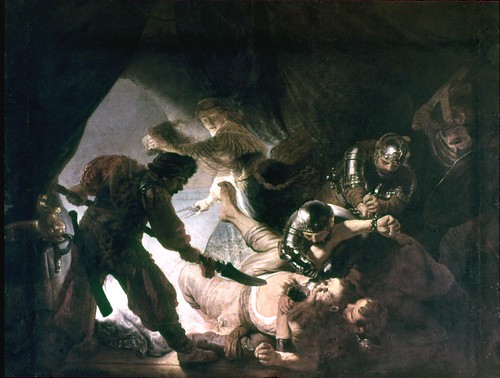
Blinding of Samson Stadelisches Kunstinstitut Frankfurt


0 Comments:
Post a Comment
<< Home